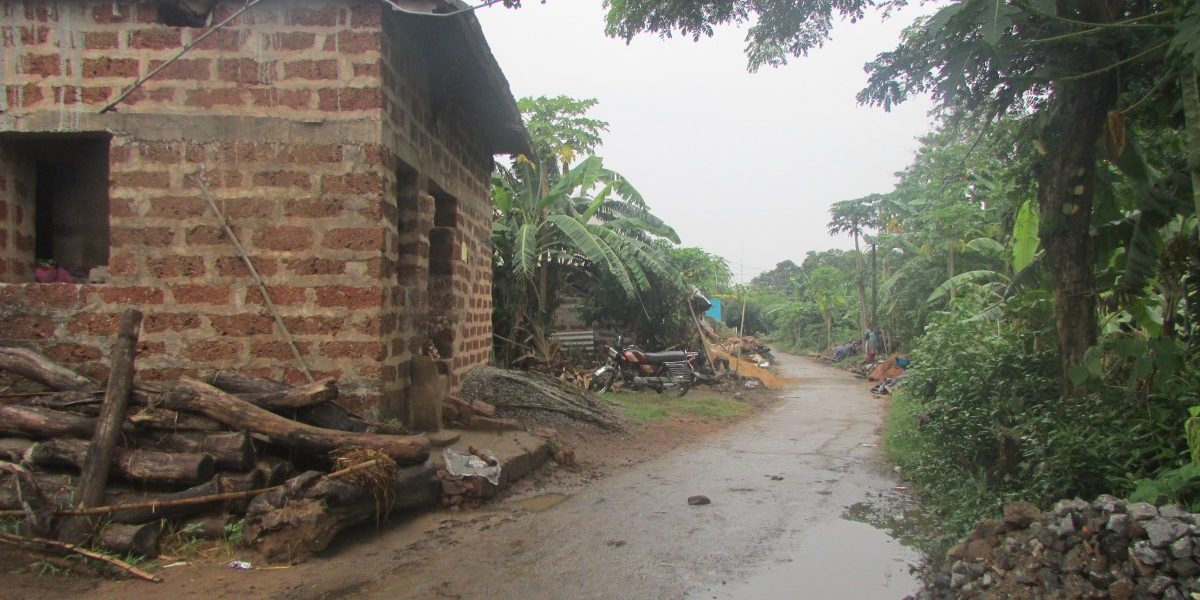
In this piece, I have tried to share some of my childhood experiences and some thoughts that I have had as a researcher in the field of the social sciences. Some terms like ‘my community’, ‘that community’, ‘my area’, ‘they’ have been used purposely to highlight how a child would make use of these words to understand the reality around him/her.
It was during the summer days of 2013, that I had gone to my village not only to meet my grandparents but also to collect field data for my Masters thesis. As part of my M.A Social Work, I was supposed to work on a thesis. I had decided to study the issue of caste and its relationship with children and attempted to find answers to some questions such as how caste operated in schools, how children perceived caste, how caste influenced the relationship that children shared with each other and so on.
When I went to meet Prof. G.G. Wankhede, who is now a retired senior professor from the School of Education at TISS, Mumbai, he asked me why I had chosen to study such a subject. Without much thought, I started arguing that caste was an important social institution and affected people in their day to day existence and therefore it composed of an important arena of interest for the social sciences. But he seemed unsatisfied with my response and asked me once again why I wanted to pursue the topic.
This time I took time and thought for a while before replying. I was not sure about my reply but I thought of sharing a personal anecdote. I told him that when I was a child I lived in that village and studied at a school that had been started by a member of the Chamar community.
This school was situated in ‘their community’ and my grandfather used to drop and pick me up daily on his bicycle. Most of the time my grandfather used to pick me during the half-time. I remember clearly whenever my grandfather used to come on his bicycle and stand in front of the main gate, I used to just pick up my belongings and leave. Even if the classes were going on, the teachers would never stop me. They would always offer me some sort of a special privilege.
Apart from enjoying going to the market with my grandfather, I never enjoyed this half time at the school. I grew up observing that while my teachers seemed to treat me as if I were someone special and offered me a privilege, the children at the school did not treat me in the same way. I remember very clearly that the children used to play in groups during the half-time and no group wanted to include me. On the one hand, I wanted to play with them but on the other, I was also aware that these children don’t belong to ‘my community’. So, I used to stand alone and watch them play and wait for the evening. The evening brought forward an opportunity when I could return back home and interact with children of ‘my community’.
During the half time, these children sometimes used to tease me for some of my habits.I used to eat a lot of biscuits and toffees. I don’t remember if I had ever made any efforts of sharing them with the other children. So these children would often call me ‘Sugar ki Bimaari’(Diabetes). I don’t remember clearly how I responded to this but I am sure I didn’t like it. Fading memory also tells me that sometimes there were fights between me and these children but as I was the only child from ‘my community’ in the school and these children were always in groups, I could never get an upper hand. But I used to think that I would take revenge from these kids when they came to ‘my community’. I also don’t remember reporting this to either my teachers or to my grandfather, maybe because I thought it would reveal my weakness.
Well, apart from these experiences at school there were some incidences at home that must have fuelled my feeling of belonging to a privileged community. As a child I wasn’t allowed to venture into the area where the school was located except during the school hours. However, people from the school-neighbourhood would often come to ‘our area.’Most of them used to work in our fields as labourers. Females from ‘their yommunity’used to come during marriages or other festivities and be employed in tasks such as washing utensils, cleaning etc. I remember the fact that they were not paid in cash for their work but were paid in kind. Compensation for the services they offered would include a share of the leftover food, part of the agricultural produce etc.
Apart from these things, there were some very peculiar things which I still remember very clearly. There was a man from ‘that community’ whose work was of giving messages from door to door. As there were no mobile phones in the village at that time, this man’s primary duty was to walk from door to door and deliver important messages. I remember that although the man would enter the houses that belonged to members of the Chamar community, he would seldom step inside our house.
He would refrain from stepping inside the house and delivered the message from outside. I recall that sometimes he would ask for a glass of water and we would hand over a glass full of water to him when he asked for it. But there was a specially designated glass that we kept for him/others of his community that we would keep outside the house and refrain from mixing with rest of our utensils.
There was another man who I remember having seen as a child. This was an old labourer who worked on our fields. Whenever he used to come to our house, he would be asked to sit on the floor while we sat on a charpoy. As a child I enjoyed the privilege of sitting above the ground while a man who was elder to me would be compelled to sit on the floor. This man would even go on to address me as Sahab(sir) or Mayen-baaap(patron), even though I was just a little child.
I will share with you another similar incident. We used to have buffalos and generally, we used to have surplus milk and lassi at home. People from ‘that community’ generally didn’t have these animals. So, they used to come to our home to take lassi. I remember either it was a female or children who used to come with a utensil. Most of the time I was the one who used to give them the lassi. But they never used to enter the house and would wait on the main gate. And my grandmother used to tell me to fill their utensils while maintaining a distance so that their utensils wouldn’t touch ours.
Even random dogs used to enter in our house but I never witnessed people from ‘that community’ enter and touch anything. At that time, I never thought about these issues. It was after studying about these issues in social sciences that I realised how severe they were and the deep impact they could leave on children’s impressionable minds.
Well, after having shared all these experiences with Prof. G.G. Wankhede, he seemed a little more convinced and said that it was really a good idea that I wanted to revisit these childhood experiences. But he also asked me to be careful while studying these societal forces and collecting data so that my upper-caste identity didn’t impact my observation of the caste dynamics.
So now was the time for my entry into the school. I was a little worried about this because I was thinking that the school principal might ask me to get official permission to conduct my research at the school. But on learning that I belonged to the same village and that I came from an influential family of the village, they provided me full access to the school and the children.
For the data collection for my study, I had planned to meet the children both at the school and in their homes. Visiting different corners of the village and understanding its structure were also part of my study. I heard many revealing anecdotes during my conversations with the children. Some of them told me that they would return back home for lunch because during the serving of the Mid-Day Meal they would be asked to sit separately as they belonged to the lower castes. When I probed into the segregated classroom seating arrangement, a girl from the Jat community told me that in the front row the Jat children sat, in the middle and last rows , the children of the Chure, Chamar and Dhanak communities sat. She did not offer an explanation as to why the children sat separately but expressed how this was normal and that they had no problem with it.
To understand the relationship between students from different castes, I also tried seeing whether there were fights amongst students from opposing castes and how the school engaged in negotiating with them. So, I met two boys from class VI and VII. Both of them were from the scheduled castes. They recalled how the teacher resorted to scolding them even when the fault was not their’s. Some other children told me that they refrained from reporting abuses to their teachers because they feared that this would backfire against their family members, many of whom worked on Jat farmlands.
To visit the families of the scheduled caste children I went to the areas of the village where I had never gone earlier. When I walked through the whole village, I was able to see the difference in resource availability, type of houses, the condition of roads, the location of the school, wells, Anganwadis (child care centres) etc. Most of the houses were very small and many were made of clay (Kaccha houses).
The primary health centre (PHC) was also situated in the area dominated by the Jats. Areas near the main road and the central area of the village were occupied by the Jat community and the peripheral areas were habituated by scheduled caste families.
Through the above first-hand experiences, I have tried to share my observations in a very simple manner. It is hoped that this will enable us to understand how caste continues to operate in many of our villages and shape the way children interact with each-other.












